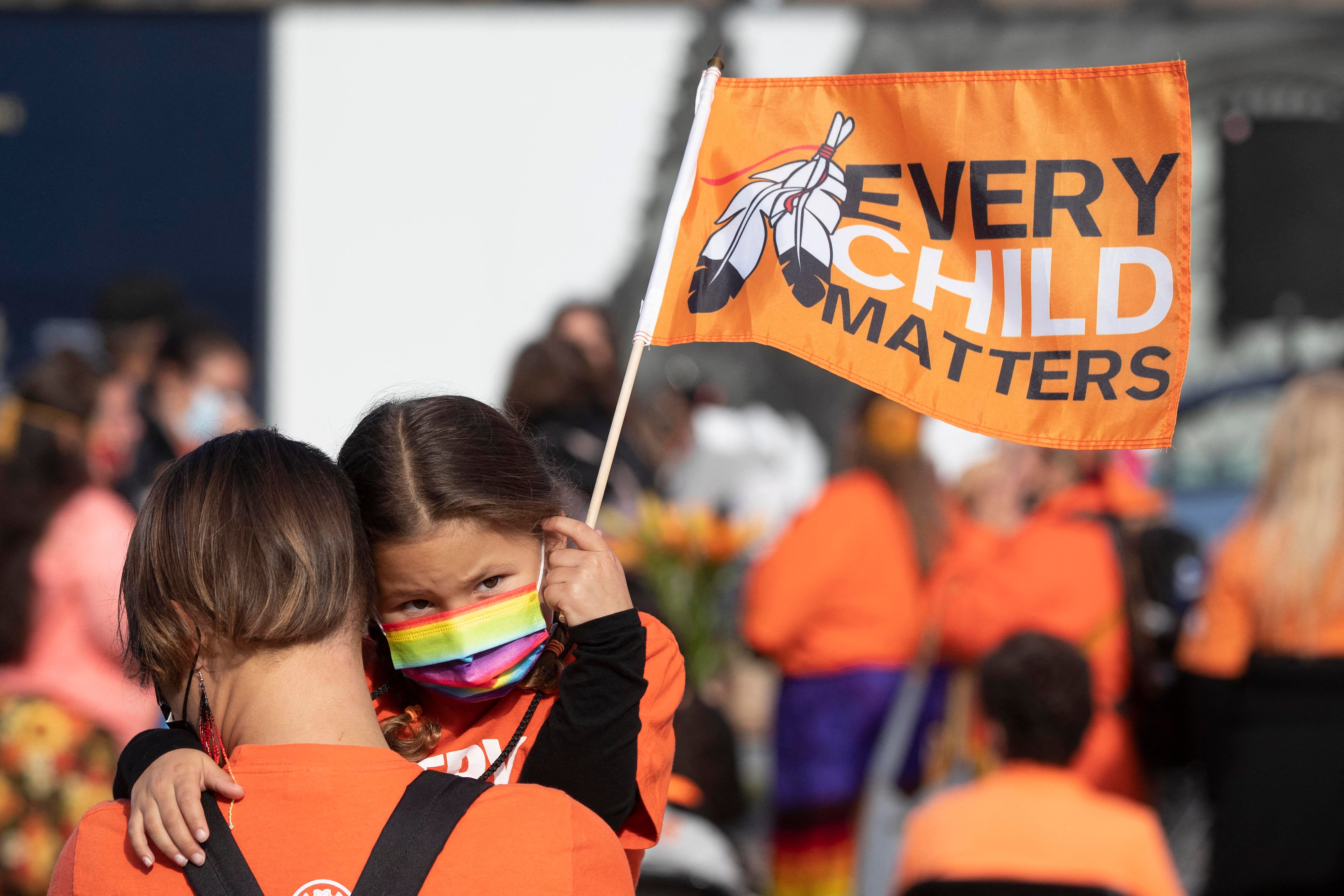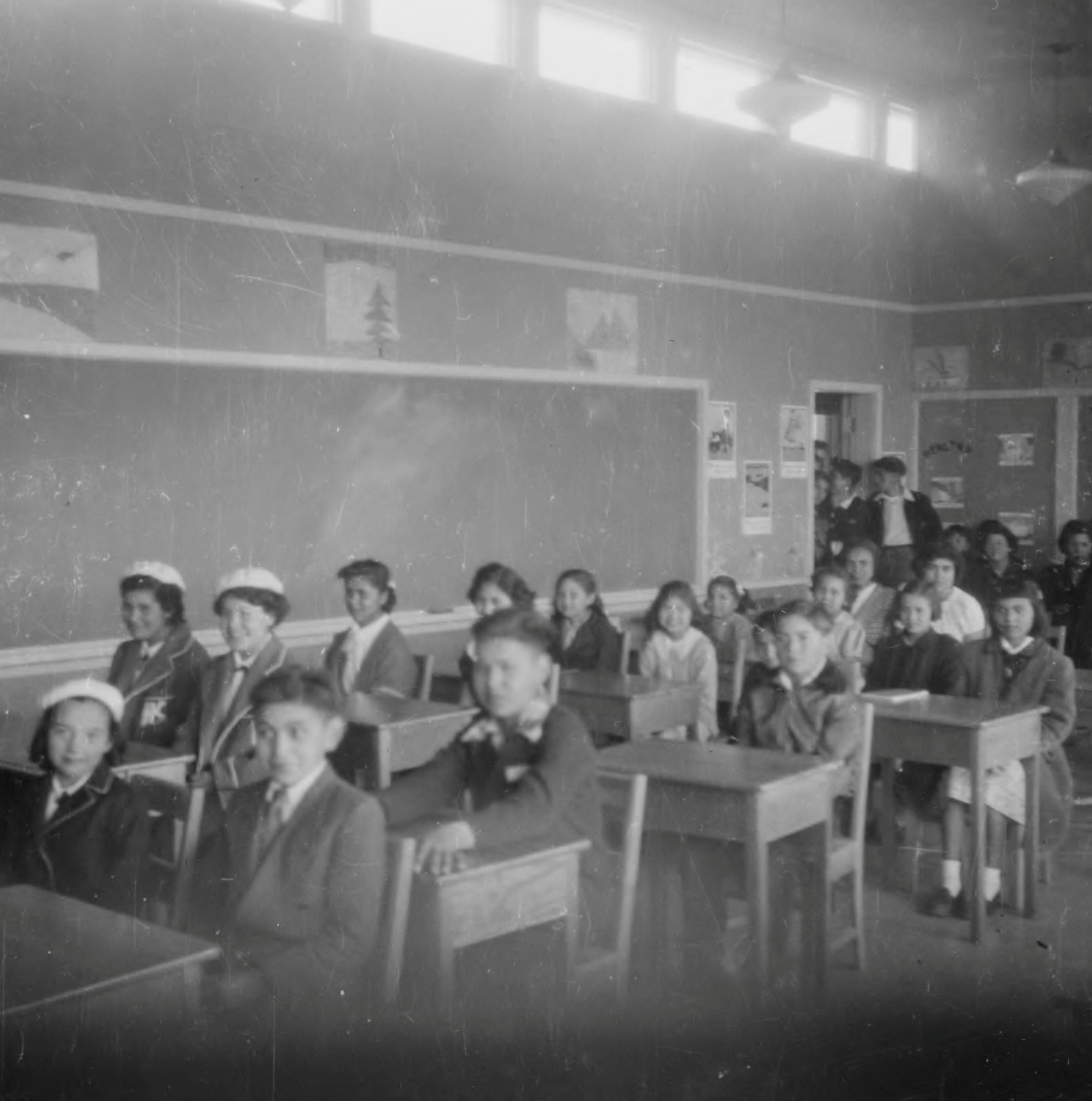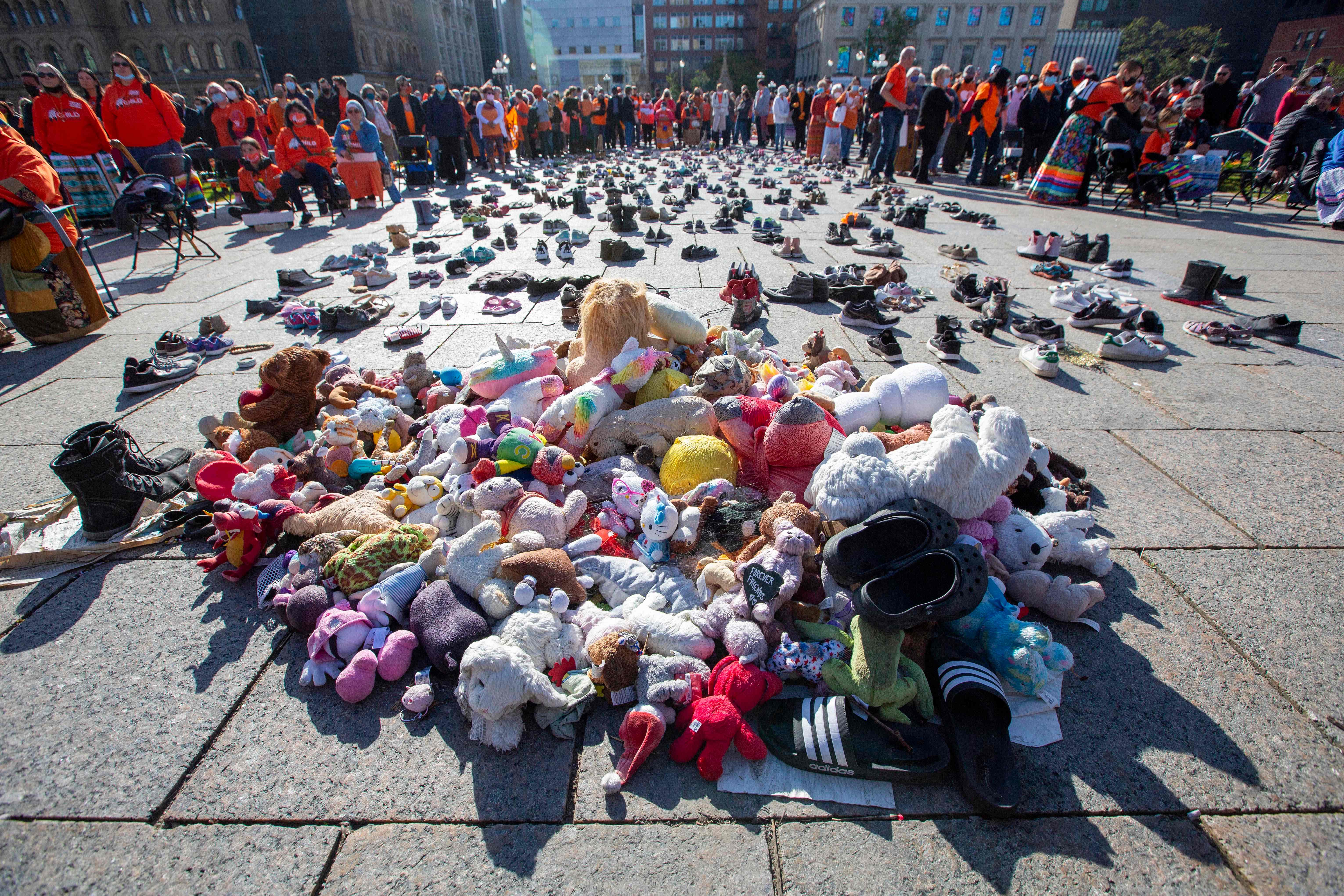‘It’s an apartheid public service system:’ how Canada’s welfare system is failing indigenous people
Canada’s government has been fighting moves to give indigenous children the same access to services, support and funding as non-indigenous children, writes Justin Ling in Montreal

Cindy Blackstock was sitting in stunned silence, watching Prime Minister Justin Trudeau defend his record.
“You can’t take a knee one day, if you’re going to take Indigenous kids to court the next,” insisted Jagmeet Singh, leader of Canada’s centre-left opposition party.
“Mr. Singh, you love that line about taking Indigenous kids to court,” Trudeau testily replied from his corner of the debate stage. “It’s actually not true.”
Blackstock was shocked. And with good reason: She was the one that Trudeau was taking to court. “You have every legal right to fight against our kids,” she told me recently. “But you don’t have the right to lie about it.”
For nearly 15 years, Blackstock has been fighting for something extraordinarily simple: she wants Indigenous children in Canada, who all too often end up in state care, to receive the same access to services, support, and funding as non-Indigenous children. And for those 15 years, the Canadian government has fought her every step of the way.
Blackstock and her organization, the First Nations Child and Family Caring Society of Canada, first filed an application in 2007 to the Canadian Human Rights Tribunal in 2007. Joined by the Assembly of First Nations, which represents some 900,000 Indigenous people, she alleged that the Canadian government systematically discriminates against Indigenous children.
“It’s an apartheid public service system,” Blackstock told me. Ottawa disagreed: Successive governments fought Blackstock’s complaint every step of the way, insisting they had done quite enough, and that they were ultimately not responsible.

In Canada, social services like healthcare, welfare, and education are largely funded by the federal government in Ottawa, but the services are delivered by the provinces and territories. The one significant exception is roughly 1.5 million Indigenous peoples: Many of whom live on federally-managed reserves still governed by the much-reviled Indian Act, which has been around since British rule; others live in Northern communities or nations who have signed governance-agreements; while others are Indigenous peoples who live outside of their First Nations community.
Canada’s federal government is, to varying degrees, responsible for providing social services to those disparate communities — ranging from mental health support to foster care or even basic primary medical services. But Ottawa has long tried to pass off responsibility to lower levels of government. That position was exposed as manifestly unfair when it came to Jordan River Anderson.
Anderson was born in 1999, in a Winnipeg hospital with a rare muscular disorder which required constant medical attention. As he grew up, his parents hoped to bring him home, to the Norway House Cree Nation. But when it came to deciding who, between the province of Manitoba and the federal government, was responsible for paying for the costs to bring Anderson home, both pointed the finger to the other.

Anderson died in hospital at five years old, having never been to his home community. The politicians and bureaucrats had been fighting for two years over who would foot the bill.
“I have a hard time with it — the loss, the pain, especially when your children, they’re having as hard a time as you are,” Anderson’s father, Ernest, said in a documentary released earlier this year, Jordan River Anderson, The Messenger.
After that tragedy, Indigenous communities began organizing around a basic guideline: That, when it comes to the welfare of children, governments should put aside bureaucratic squabbling and focus on caring for the child. They called it Jordan’s Principle. In 2007, the House of Commons unanimously endorsed the Principle.
Meanwhile, Ottawa continued to fight Blackstock and those Indigenous children in court. In 2016, the Tribunal sided with Blackstock: It found Ottawa systematically underfunded child welfare programs for Indigenous peoples, that it was outright discriminatory, and that the structure of government funding programs “perpetuates the incentives to remove children from their homes.”
That determination was a stark one. Canada had only just begun to confront its legacy of abducting Indigenous children and forcing them into state custody. For decades, from the 19th century right up to the 1990s, Canada maintained a two-tiered education system: One for non-Indigenous children, and one where Indigenous children were taken from their communities and sent to live in boarding schools run by the state and church. Those schools aimed to separate the kids from their culture, language, and identity — and were rife with abuse and mismanagement. Children died in those schools at a measurably higher rate than white children. At least 3,200 children perished, often from treatable illnesses, suicide, and neglect. In recent months, Indigenous communities have unearthed evidence of mass, unmarked, graves on the former sites of those schools.

As those schools started to fall out of favour, in the 1950s and 1960s, the state systematically abducted Indigenous children from their communities, over the sobs and pleas of their parents, and placed them into provincial care or white foster homes in the United States and Canada: A dark era now referred to as the “Sixties Scoop.”
The legacy of that grotesque system has helped spark a significant national conversation on what it would mean to rectify those historic and current injustices: Reconciliation. With that has been an emerging recognition that its behaviour - the removal of children from their parents constituted genocide.
It’s a reckoning that has, at different speeds and in different ways, taken root in the United States, New Zealand, Australia, and beyond.
In 2019, the National Inquiry into Missing and Murdered Indigenous women and girls, in which 2,380 people participated, concluded that the Canadian state perpetrated genocide against Indigenous peoples. The report concluded in its summary: “this genocide has been empowered by colonial structures, evidenced notably by the Indian Act, the Sixties Scoop, residential schools, and breaches of human and Inuit, Métis and First Nations rights, leading directly to the current increased rates of violence, death, and suicide in Indigenous populations.”
The notion that Canada’s approach to Indigenous welfare continues to propagate an inadequate level of care, and continues to force Indigenous children from their communities, is a clear and unsettling confirmation of what the Inquiry wrote in 2019: That many of Canada’s colonial policies "continue today under a different guise," including "proactive measures to destroy, assimilate, and eliminate Indigenous peoples" and "omissions by the Canadian government to ensure safety, equality, and access to essential services which have had direct, life-threatening consequences on Indigenous communities."
Departing from that colonial history is easier said than done. When Trudeau took office in 2015, he vowed reconciliation would be at the centre of his time in government. Many Indigenous placed their trust in that promise and have been left disappointed.
Even with that devastating ruling at Ottawa’s feet, even with Trudeau’s soaring rhetoric, things immediately stalled. Four times over Trudeau’s early years in office, the Tribunal found the Canadian government failed to comply with its orders and ran roughshod over Jordan’s Principle. Ottawa continued to discriminate against Indigenous children, failed to increase funding in line with what non-Indigenous children receive, and consistently tried to pass responsibility on to other levels of government. His government, in 2019, did make modest reforms to the system, but those changes were panned as a further attempt to download responsibility.
It feels like we’re dealing with a repeat offender, who doesn’t want to be held accountable
The discrimination was so flagrant and consistent that the Tribunal ruled that Ottawa must compensate those Indigenous families it had shortchanged and left out to dry: $40,000 CAD for each person discriminated against. The federal government continued to contest those findings in court.
“It feels like we’re dealing with a repeat offender, who doesn’t want to be held accountable,” Blackstock told me.
This has all culminated in yet another damning ruling. On September 29, the Federal Court of Canada once again sided with Blackstock, upholding the compensation — a judgement that could cost Ottawa billions. “Had they done the right thing, there would be no victims to compensate,” Blackstock says.

“The parties must decide whether they will continue to sit beside the trail or move forward in this spirit of reconciliation,” Justice Paul Favel wrote in his ruling.
Blackstock hopes the ruling will push Ottawa along that path: To help finally end the cycles of poverty, neglect, and abuse that were started by more than a century of colonialism. "We’re right here with the solution," she says.
The question remains whether Justin will return from the beach ready to work with Indigenous communities or is going to spend millions more on lawyers fighting against justice
Watching Trudeau on that debate stage last month, however, was a depressing spectacle. And things haven’t improved since. Trudeau won last month’s federal election by a nose, but there are some clear signs that nothing has really changed. Four days after election day, on a Friday afternoon, his government announced plans to fight another Tribunal ruling — one which requires Ottawa to invest in the woefully inadequate child welfare capital infrastructure, another of Blackstock’s legal battles.
“We still have 13-year-olds needing to leave their community to get an education, because the government is too cheap to build a high school,” she sighs.
The following Thursday, September 30, was the National Day for Truth and Reconciliation: A national holiday dedicated by Trudeau just last year. Instead of accepting an invitation to a ceremony in the Tk’emlúps Nation, at the site of a former residential school where a suspected mass grave has been identified, Trudeau flew right over the community and landed in picturesque Tofino, British Columbia. Images of him surfing angered and disappointed Indigenous peoples across the country. Blackstock called it "insulting," showing a "profound lack of compassion."
Singh’s party, the NDP, have continued to blast Trudeau’s Liberals. “The question remains whether Justin will return from the beach ready to work with Indigenous communities or is going to spend millions more on lawyers fighting against justice? It’s time for Justin Trudeau to do what’s right and stop his legal wars against Indigenous people.”
Blackstock isn’t optimistic about Trudeau — "I fully expect them to file an appeal," she says of her recently legal victory. But Blackstock has the wind in her sails.







Join our commenting forum
Join thought-provoking conversations, follow other Independent readers and see their replies
0Comments